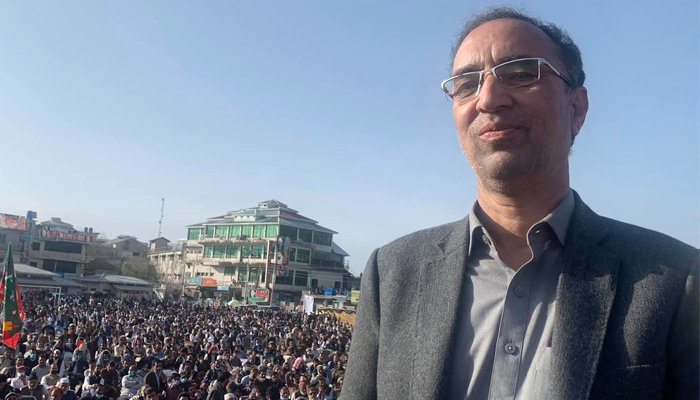Kashmir: closed chapter?
Recently, Indian Home Minister Amit Shah warned Pakistan that more surgical strikes could be carried out in case of transgressions at the India-Pakistan border. “There is no time to hold talks, will only retaliate,” he said. The threat of surgical strikes coincides with a spate of civilian killings and back-to-back armed clashes that took place close to the Line of Control (LoC) and even in densely populated areas such as Shopian and Tral.
Consequently, over 33 people have died in the past two weeks alone, including nine Indian soldiers and thirteen militants. In retaliation, the Indian forces have launched a massive manhunt, jailing over 300 citizens for the acts committed by a few individuals. The arrested Kashmiris were subjected to collective punishment, which is a war crime.
Leaving aside the reasons behind the sudden surge in the armed clashes and civilian killings, these tragic incidents prove that Indian-held Jammu and Kashmir, especially Srinagar city, is no longer a violence-free area as boasted by Indian authorities. Some of the attacks took place in the heart of the city which shows that the normalcy mantra was merely rhetoric to create an illusion of peace. Kashmiris have maintained a long silence since the abrogation of Article 370 which was misconstrued and later turned out to be a lull before the storm.
The Indian home minister’s statement clearly indicates that the ceasefire along the LoC has failed to make any headway in resuming diplomatic ties and initiating a dialogue process over the long-standing Kashmir issue despite backchannel contacts which led to a truce in February this year. The quiet diplomacy led by friendly countries – Saudi Arabia and the United Arab Emirates – remained unable to cut a deal between the two neighbours.
On the other hand, the BJP government is using these killings for its domestic political gains, portraying the struggle as a Hindu-Muslim conflict as a few local and Hindu migrant workers were also gunned down in the most recent attacks. Some Indian observers called it the beginning of ethnic cleansing or the return of the 1990s which marked the mass exodus of Kashmir pundits from the valley, ignoring the fact that a large number of civilians killed this year were Muslims.
The community in the majority suffered more than anybody else, but the Indian media and politicians hardly demonstrate sympathy for the loss of lives of common Kashmiris, particularly Muslims. Ironically, human tragedies are being seen through the religious lens.
The Washington Post observes on August 16, 2019, “The Kashmir crisis isn’t about territory. It’s about a Hindu victory over Islam. Prime Minister Narendra Modi used the Muslim-majority state as a demonstration of Hindu power.”
Consequently, the Hindu-Muslim gulf in Indian-held Jammu and Kashmir is fast broadening. Also, the two communities are now taking divergent paths and indulging in a zero-sum game. Former chief minister of Jammu and Kashmir Farooq Abdullah recently advised fellow Muslim voters to consolidate their political power under the banner of the political party ‘National Conference’.
The February ceasefire offered a historic opportunity for the initiation of dialogue and the resumption of full-scale diplomatic and trade ties. However, the government of India did not honour the commitments which were made through a third party and in backchannel talks as it was assured that the statehood status of Indian-held Jammu and Kashmir would be restored, no demographic change would occur, and zero-tolerance to human rights violations would be ensured.
The post ceasefire developments revealed that India has rushed the administrative and legal changes in all spheres of life, trying to ensure that no semblance of autonomy or Kashmiriyat remains. Despite making promises, it did not restore the statehood of Jammu and Kashmir. Likewise, military operations inside Kashmir were intensified in order to suppress dissenting voices. No respite in human rights violations was recorded in the past months. A large number of political leaders are still in jails, including Yasin Malik, Shabir Shah and 76-year-old Mian Abdul Qayoom. Some of them are suffering from serious illnesses.
It is widely reported that the people of Kashmir are not even able to express themselves freely or communicate their day-to-day suffering on social media fearing the state’s clampdown. Nearly, 10, 000 citizens are under strict illegal surveillance. Such systemic oppression has constantly been pushing young people to join militant outfits without realising its consequences.
One of India’s leading news magazines, Frontline, aptly captures the situation in its October edition in the following words: “By squeezing political space, New Delhi has pushed the young Kashmiris against the wall. They have no avenue to vent out their grievances or express their views. The reality is that the Indian government continues to rule Jammu and Kashmir by means of the barrel of a gun and a slew of draconian measures that embody an unprecedented media gag and witch-hunting of civil society members, politicians and journalists who attempt to expose what is unfolding on floor zero.”
All recent developments indicate that backchannel conversations or third-party mediation efforts cannot deter the BJP’s government from pursuing its ideological agenda towards Kashmir. It appears that Kashmir is inching towards another round of full-scale confrontation in the days to come.
It is naive to think that the Kashmir issue is a closed chapter. If it remains unresolved for a long time, it might take a dangerous turn and become even more complicated and hard to be resolved. The ceasefire along the LoC sustained so far might not last long if timely steps are not taken or significant change in the Indian approach towards Kashmir is not made.
The writer is a freelance contributor.
Email: [email protected]

